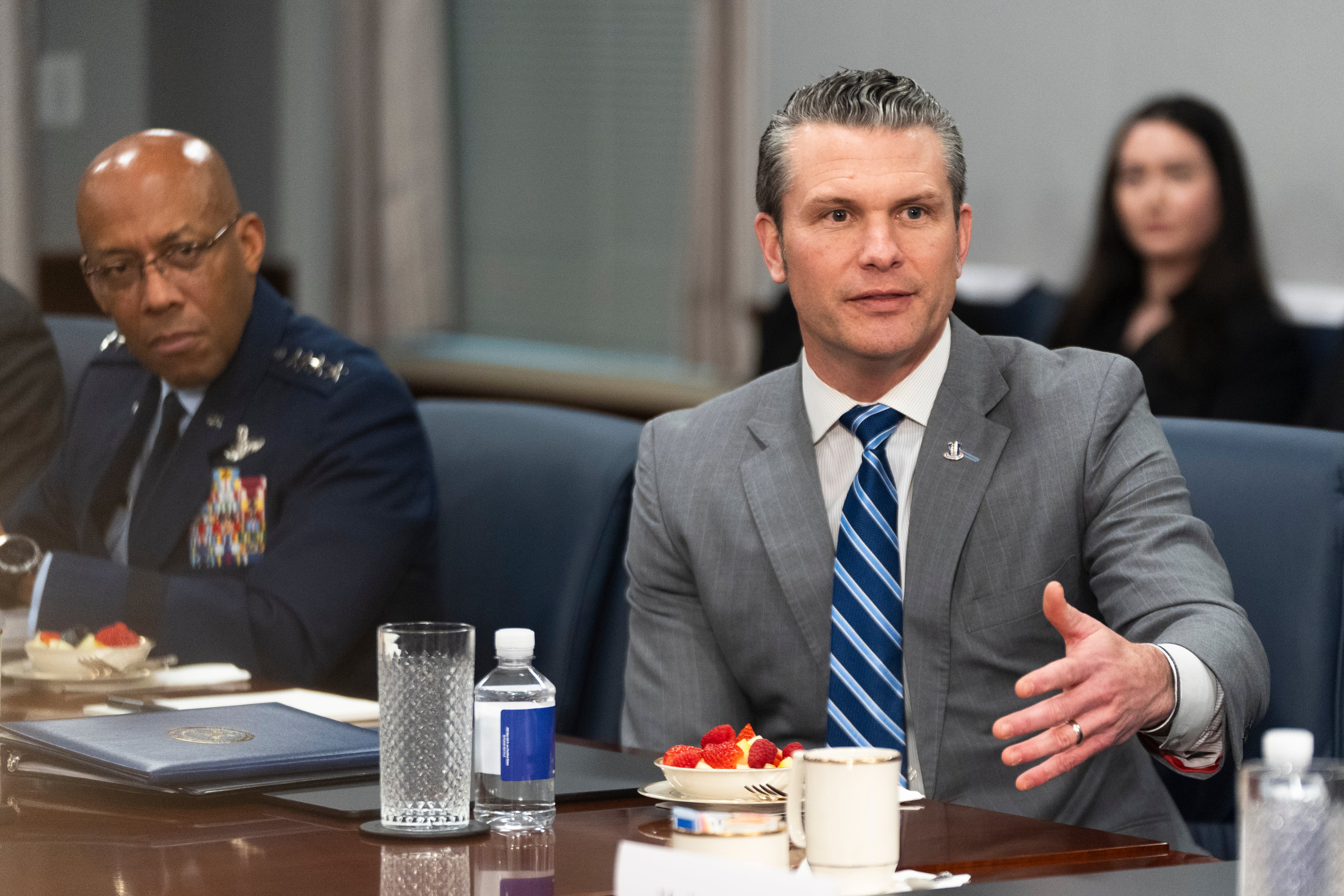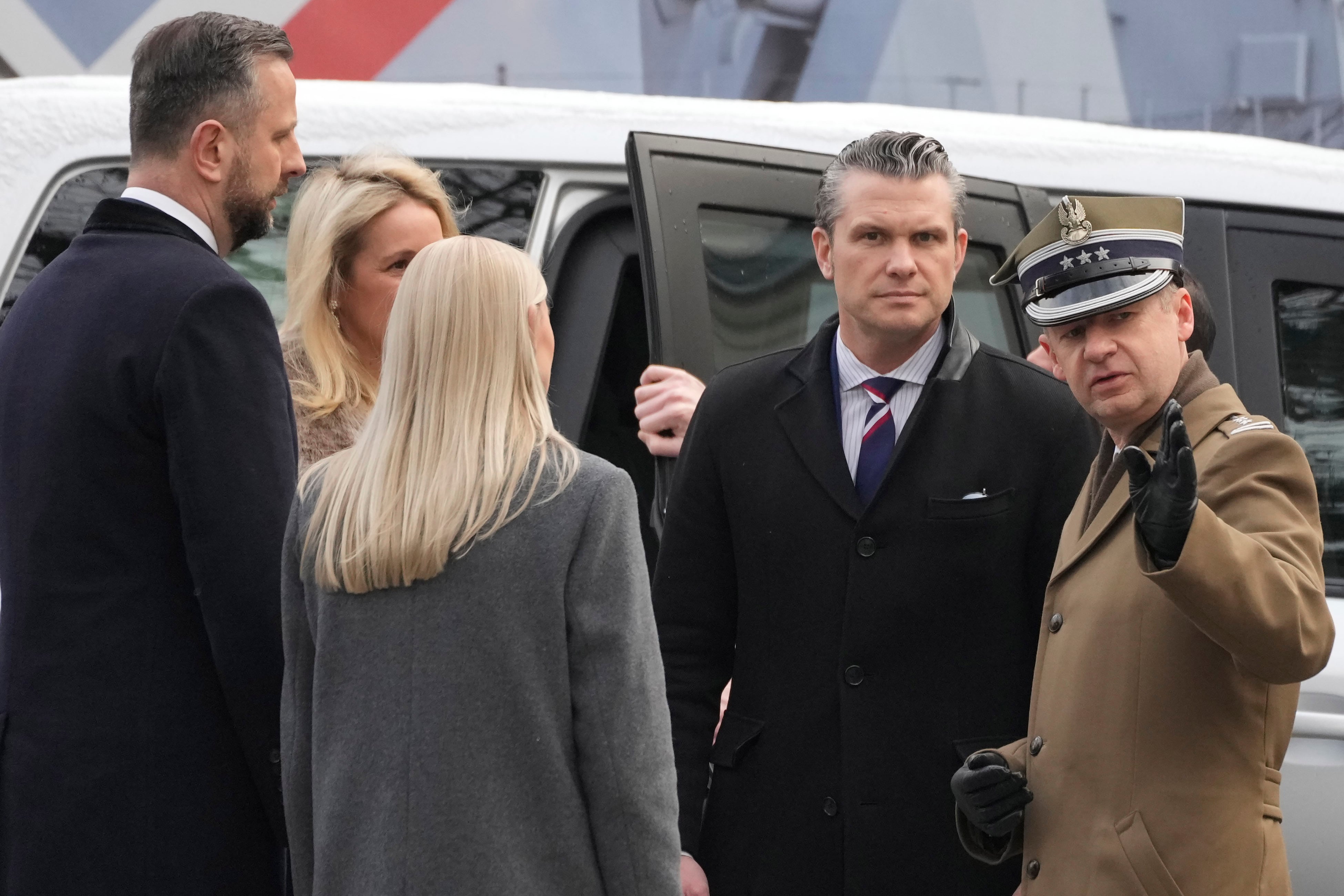WASHINGTON ― The head of U.S. Transportation Command is pushing the Air Force to rethink some of its controversial plans to retire some of its older aerial refueling aircraft, and leaders inside the Pentagon are paying close attention.
Amid delays in fielding the Boeing KC-46 tanker due to technical problems and high demand for aerial refueling, TRANSCOM’s Gen. Stephen Lyons testified he is making a case to the Air Force to scrap its proposal to retire 13 KC-135 and 10 KC-10 tankers in fiscal 2021. Those aircraft, Lyons said during a Senate Armed Services Committee hearing, “must be retained.”
After the Senate Armed Services Committee hearing, Lyons told reporters a solution is close after meetings that included Deputy Defense Secretary David Norquist, Joint Chiefs Vice Chairman Gen. John Hyten and Air Force Chief of Staff Gen. David Goldfein.
“We’re all clear eyed about the degradation to the joint force and the operational risk,” Lyons said. “To the senators’ questions, ‘What do we do?’ That’s the big question. Whether it becomes a mark in this budget or a reprogramming action, we’re attempting to retain those aircraft to mitigate that deep bathtub [in capability] that occurs with the KC-46 conversion.”
During the hearing, Lyons fielded questions about the impact of KC-46 delays from a handful of supportive lawmakers, to include SASC Chairman Jim Inhofe, R-Okla., who said he planned to Air Force officials when they appear before the panel. Inhofe and other lawmakers pointed to affected Air Force aerial refueling wings in their states.
“Aerial refueling as a force element is one of the most stressed element in the TRANSCOM portfolio, both for day-to-day operations and for high-end operations,” Lyons told the panel, adding that because the KC-46, “is not usable” in an operational environment, there could be “a dip in operational capability for the joint force,” over as many as seven years.
At one point, Sen. Angus King, I-Maine, pressed Lyons to present a detailed analysis of the capability gaps and propose a solution.
“I want to know: what’s the plan. We can’t project force if we can’t refuel those airplanes ... For the record, I’d like to see an action plan, not just a reevaluation,” King said, adding, “If we have crisis and need that capacity, saying, ‘Well, it was a complicated problem,’ isn’t going to cut it."
Lyons agreed to return with a joint Air Force plan. Meanwhile, he said, the service has already agreed TRANSCOM would retain 28 legacy aircraft to mitigate the effects of the conversion to the KC-46. TRANSCOM has been working through shortfalls in both aircraft and aircrews.
“Its a very complex program for the Air Force to work and they’re pushing as hard as they can with Boeing,” he said.
The testimony came days after the command advocated reversing the retirements of 13 KC-135 and 10 KC-10 tankers in its list of priorities unfunded by the president’s budget request ― a move that would almost completely roll back the Air Force’s proposal to retire 13 KC-135s and 16 KC-10s in FY21.
TRANSCOM projected the cost to retain the 23 tankers at $110 million, and said that their retirements would create “a capacity bathtub” and limit options for military mobilization if military leaders were “confronted with a crisis.”
RELATED
Air Force makes reductions to B-1s, A-10s, Global Hawk drones and more in FY21 budget request
Even though the Air Force is accepting deliveries of the KC-46, its leaders have made clear that the service will not utilize its newest tanker in combat until the Remote Vision System — a series of cameras used to steer the boom into another aircraft’s refueling receptacle — is brought up to the service’s specifications.
Defense News reported last week that the Air Force is hoping to have a fix in hand for the KC-46 tanker’s most critical technical problem by the end of March.
Joe Gould was the senior Pentagon reporter for Defense News, covering the intersection of national security policy, politics and the defense industry. He had previously served as Congress reporter.
Valerie Insinna is Defense News' air warfare reporter. She previously worked the Navy/congressional beats for Defense Daily, which followed almost three years as a staff writer for National Defense Magazine. Prior to that, she worked as an editorial assistant for the Tokyo Shimbun’s Washington bureau.





